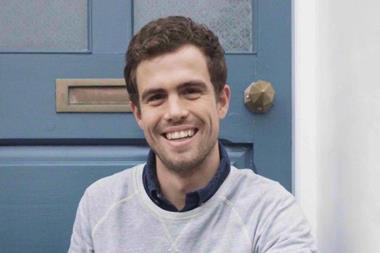The beauty of always being honest is that you don't have to recall what you said to someone. Whereas whenever you lie, you always have to remember in case you're asked again.
There are the deceitful whoppers often designed to save a bit of money, and the little white lies usually told to save someone's feelings. For example, 'No, of course, your bum doesn't look big in that' is more likely to precede a successful evening than if your answer includes a reference to say, a baboon or a sumo wrestler.
The truth is, lies are difficult to detect. Even the classic tell-tale signs are no real indicator. Today, people rarely fidget or look away when they're lying. They don't scratch the back of their neck, act nervously, or change the pitch of their voice. If they touch their nose it's probably itching. If they touch yours, you're standing too close.
So how do you tell? Well, years of examining real police interviews allowed Albert Vrij, author of Detecting Lies and Deceit, to provide some guidance about what non-verbal signals represent.
Firstly, it's important to consider a person's natural behaviour. A friendly, outgoing character who turns up on your doorstep asking to borrow an axe is more likely to get assistance than a dead ringer for Hannibal Lecter.
Similarly, introverts or socially nervous people sometimes give the false impression they're lying. As a teenager I would often fidget nervously when chatting up a girl even though I was deadly serious about the proposition. Even the bit about the custard.
Researchers concluded that the way to spot a lie is to study someone's behaviour when telling the truth, then to compare this with their behaviour when you suspect them of lying.
Lying places high cognitive demands on an individual and the more awkward questions asked, the more pressure they feel and the more signs they display. This is basically how lie detectors work, detecting changes in facial movements, heart rate and sweat glands.
Of course, if you have a meeting with a sales director and you need to know his real plans for next year, it's probably not the done thing to wire him up first. So rely on your intuition. If you're a sales person it is doubtlessly finely honed anyway. If something doesn't quite feel right, it probably means that something isn't quite right. Either that, or your underwear is on back to front.
In a nutshell, implicit or broadly subconscious processes can be more effective at detecting a lie than conscious directed thought. And if you want to be sure, ask them to recount the story over and over again. And don't forget to look out for the TNTs Tiny Noticeable Things that are different. As they say on the telly, the truth is out there.n
Philip Hesketh is a professional speaker on the psychology of persuasion and author of Life's a Game so Fix the Odds. www.heskethtalking.com.
There are the deceitful whoppers often designed to save a bit of money, and the little white lies usually told to save someone's feelings. For example, 'No, of course, your bum doesn't look big in that' is more likely to precede a successful evening than if your answer includes a reference to say, a baboon or a sumo wrestler.
The truth is, lies are difficult to detect. Even the classic tell-tale signs are no real indicator. Today, people rarely fidget or look away when they're lying. They don't scratch the back of their neck, act nervously, or change the pitch of their voice. If they touch their nose it's probably itching. If they touch yours, you're standing too close.
So how do you tell? Well, years of examining real police interviews allowed Albert Vrij, author of Detecting Lies and Deceit, to provide some guidance about what non-verbal signals represent.
Firstly, it's important to consider a person's natural behaviour. A friendly, outgoing character who turns up on your doorstep asking to borrow an axe is more likely to get assistance than a dead ringer for Hannibal Lecter.
Similarly, introverts or socially nervous people sometimes give the false impression they're lying. As a teenager I would often fidget nervously when chatting up a girl even though I was deadly serious about the proposition. Even the bit about the custard.
Researchers concluded that the way to spot a lie is to study someone's behaviour when telling the truth, then to compare this with their behaviour when you suspect them of lying.
Lying places high cognitive demands on an individual and the more awkward questions asked, the more pressure they feel and the more signs they display. This is basically how lie detectors work, detecting changes in facial movements, heart rate and sweat glands.
Of course, if you have a meeting with a sales director and you need to know his real plans for next year, it's probably not the done thing to wire him up first. So rely on your intuition. If you're a sales person it is doubtlessly finely honed anyway. If something doesn't quite feel right, it probably means that something isn't quite right. Either that, or your underwear is on back to front.
In a nutshell, implicit or broadly subconscious processes can be more effective at detecting a lie than conscious directed thought. And if you want to be sure, ask them to recount the story over and over again. And don't forget to look out for the TNTs Tiny Noticeable Things that are different. As they say on the telly, the truth is out there.n
Philip Hesketh is a professional speaker on the psychology of persuasion and author of Life's a Game so Fix the Odds. www.heskethtalking.com.















No comments yet